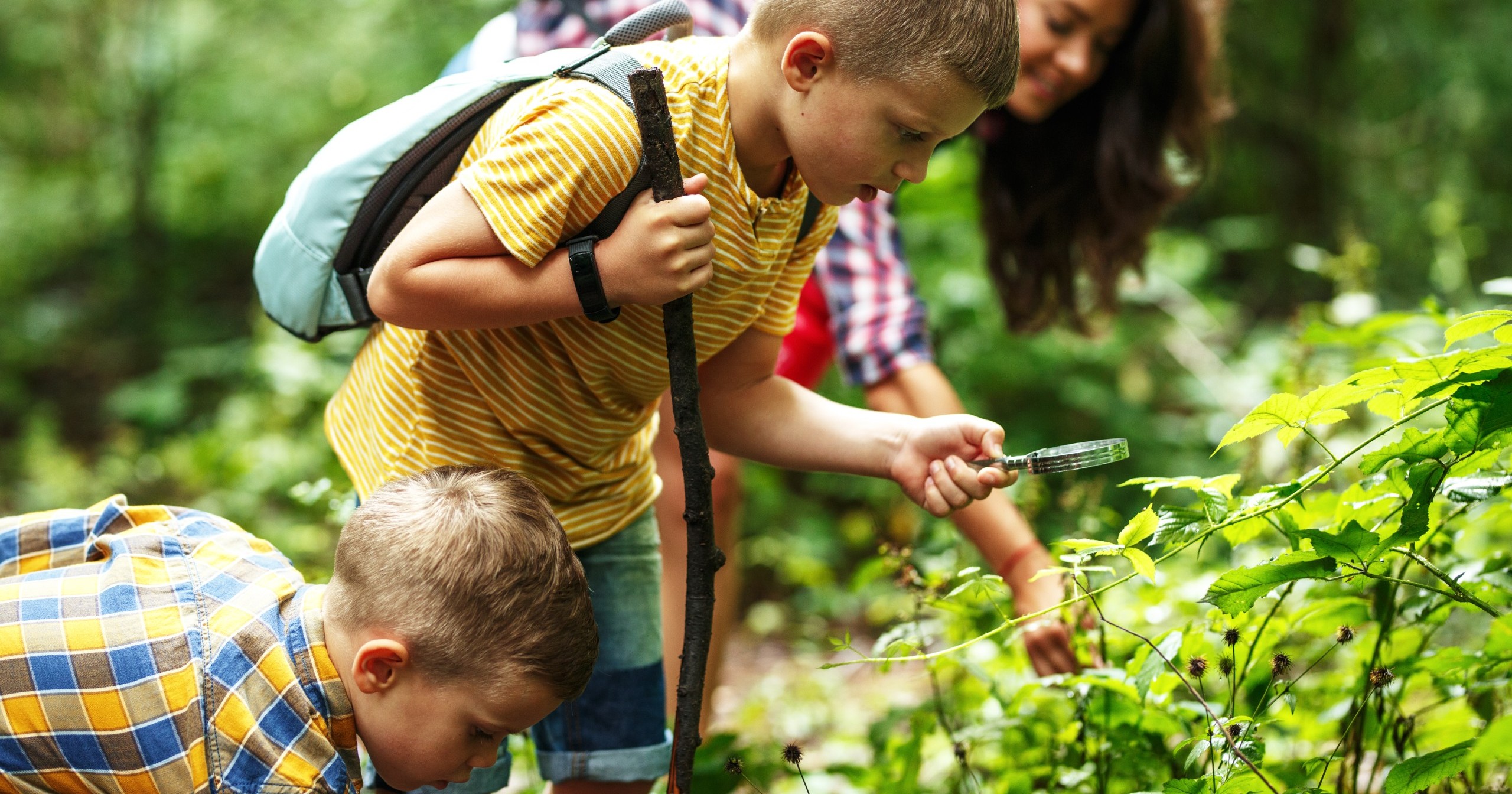
When you live on a planet such as Earth, the opportunities for exploration and learning are endless.
Your funds, however, are not endless.
And that’s okay! It’s entirely possible to take your family on field trips that are cost-effective and bursting with educational opportunities. Even if your kids are public or private schooled and may take several field trips each year, taking family field trips will further enrich their education and development—plus provide some great family memories to boot!
But, you might be wondering, aren’t field trips “just for fun?” and “Wouldn’t my child’s time be better spent studying his classroom materials instead?”
Short answer, no! Not necessarily. Sometimes keeping kids in the classroom or stuck in their books is the best way to squelch their desire to learn.
Why are field trips practical?
It’s no secret that every child is a mini explorer in his or her own way. From touching everything to asking “why?” a million times, kids are learning from using everything they taste, touch, and see. This experiential growth impacts their overall development in the present and future!
According to Explorable Places, kids make important connections between what they learn about in the classroom and the tangible world around them while participating in field trips. “They begin to see that what they learn within the walls of the classroom can help them solve the problems they see in the world around them and can have a direct impact on who they become as people.”
Furthermore, field trips are unique in that they aren’t just for having fun. According to one study, “[They pose no] threat to in-class instruction [because] they’re a tool to help bolster engagement and expand students’ horizons,” says Heidi Holmes Erickson—the lead study author at Brigham Young University.
To top it off, this study reports on adults who took field trips as kids that:
- 59% had better grades
- 95% had higher graduation rates from high school
- 63% had higher graduation rates from college
And “89% said educational trips had a positive, lasting impact on their education and career because enriching field trips made them more engaged, intellectually curious, and interested in and out of school.” Pretty cool, huh?
Let’s get on the road!
The great thing about family field trips is that they’re customizable! And they don’t have to be complicated or expensive.
A good place to start in planning a field trip is to ask how you can connect what your kids are learning in the classroom to the world outside the classroom walls. There are a number of ways you can enrich a subject by just going to town!
If you want to keep it local and cost-effective, check out these ideas from Orison Orchards:
- Tour your state capital! Doing this will give your kids a better understanding of how your state’s government operates. You might even get the opportunity to view legislative sessions if you time it right.
- Take a civic field trip: this includes calling up your local police or fire departments, the post office, or maybe the airport, and asking if your kids can come to watch how these facilities and their personnel operate.
- Explore your community: “Call around to local restaurants, eye doctors, dentists, and veterinarians and ask if they give tours. Once we took a tour of a local pizza place, and they let each of the kids make and bake a pizza to take home. Be sure to consider unusual community offerings, too, such as mining operations, movie studios…Many business owners love to talk with children about what they do and your students just might discover a future career.”
Maybe you’d rather plan field trips based on the interests your child already shows:
- Art & History: a field trip to an art museum is a great place to combine these two interests. It can inspire young artists as they’re exposed to multiple mediums and it can help bridge the gap in a child’s understanding of history: “Students oftentimes struggle with history because they are unable to relate to historical events and figures. Being exposed to art and sometimes seeing the events on canvas helps students gain a deeper understanding of history,” says Mobile Permissions.
- The natural world: a good way to open the world to kids who love the outdoors and beyond is by taking trips to botanical gardens, planetariums, zoos, farms, aquariums, parks, and nature preserves. Getting in touch with these environments leads your child to think of the vast possibilities Earth has to offer and teaches them more about ecosystems, environments, and habitats.
- Behind the scenes: Most kids watch TV and movies—but do they know what goes on behind the scenes? Call up your local TV station and ask for a tour. Or take it one step back in time and go to the theatre to watch a play or see if you can get a tour of the set!
Looking for something unique and meaningful?
- Tour a military base: this opportunity won’t sneak by your kids. Most bases have small museums that generally have free admission. Being in this noble and patriotic environment will likely strengthen your kids’ American identity, understanding of their history, and gratitude towards those who protect them.
- Dig into local history and sites: America is full of small-town history. If you live in one or near a small town, simply Googling your area will probably turn up some interesting stories and sites to visit.
- Adopt a spot: This unique idea is less trip and more field. SignUpGenius suggests that, “students adopt a local section of a beach, road or park, and take pride in keeping it clean…It’ll make them appreciate local areas and think twice before dropping trash on the ground.”
Keeping it inexpensive
Most of these field trip options are inexpensive or free. For those that might cost a little, consider looking for deals or coupons in order to get an admission discount to places like museums or planetariums.
Check to see if your state or area has some kind of corporate museum network or alumni group that allows you free admission to multiple museums with a yearly membership fee. For instance: “Our local children’s museum has a reciprocal agreement with other children’s museums, so we can get free admission to other places with our annual pass to our own museum,” says Orison Orchards.
Other smart ways to save money on field trips is to bring your own lunch or snacks with you and avoid eating out. Additionally, if you want to take a more elaborate trip (i.e. to a national park and you will need to stay overnight) learn to camp! This saves money and teaches new skills to your kids. And the memories will be timeless.
Another financially mindful way to plan field trips is to get your students to help raise the funds. This is a fantastic way for kids to hone their gifts, fortify their work ethic, and learn about the work and reward system.
Ideas in the bank
We hope you’ve found some of these ideas and tips to be helpful! Now go have some fun! Don’t forget that you can include your kids in field trip planning. Letting them make some of the decisions about where to go will help them gravitate towards their interests and give them something to look forward to—incentivizing their book-learning!
In conclusion, remember that taking a family field trip doesn’t have to be complex or glamorous. Your kids will learn something and have fun no matter what!





[…] Adventuring on a Budget – Family Field Trips on a Budget […]
[…] field trips through the school year or over the summer […]